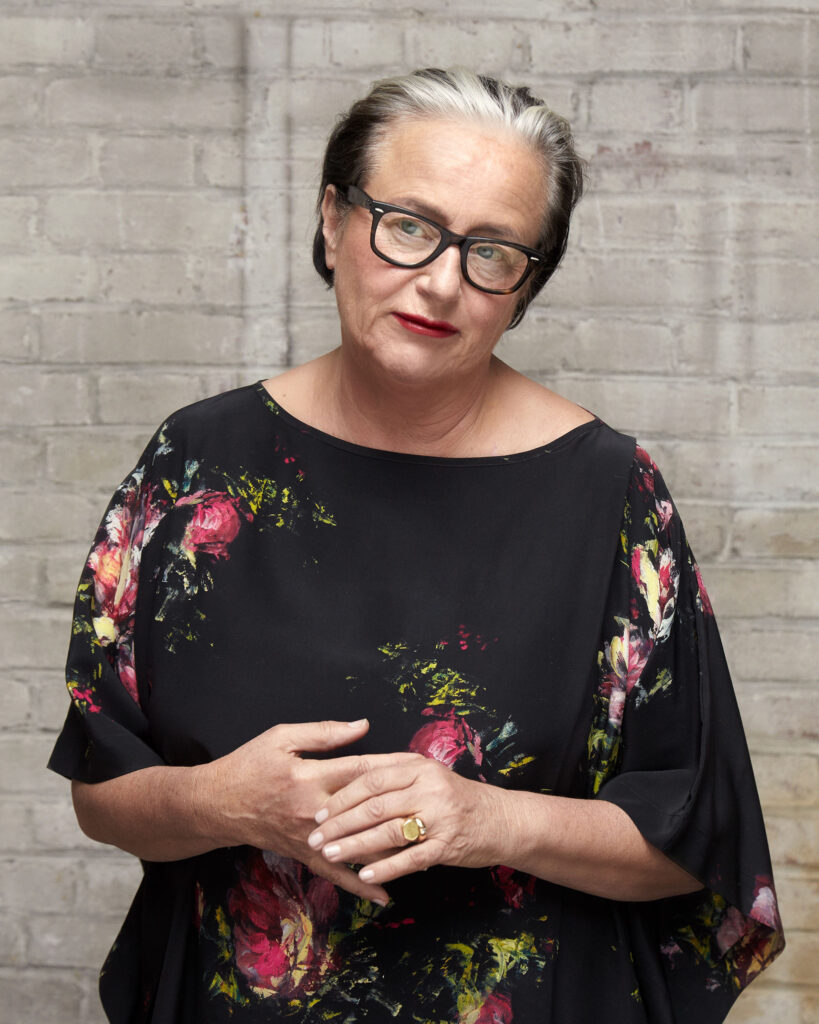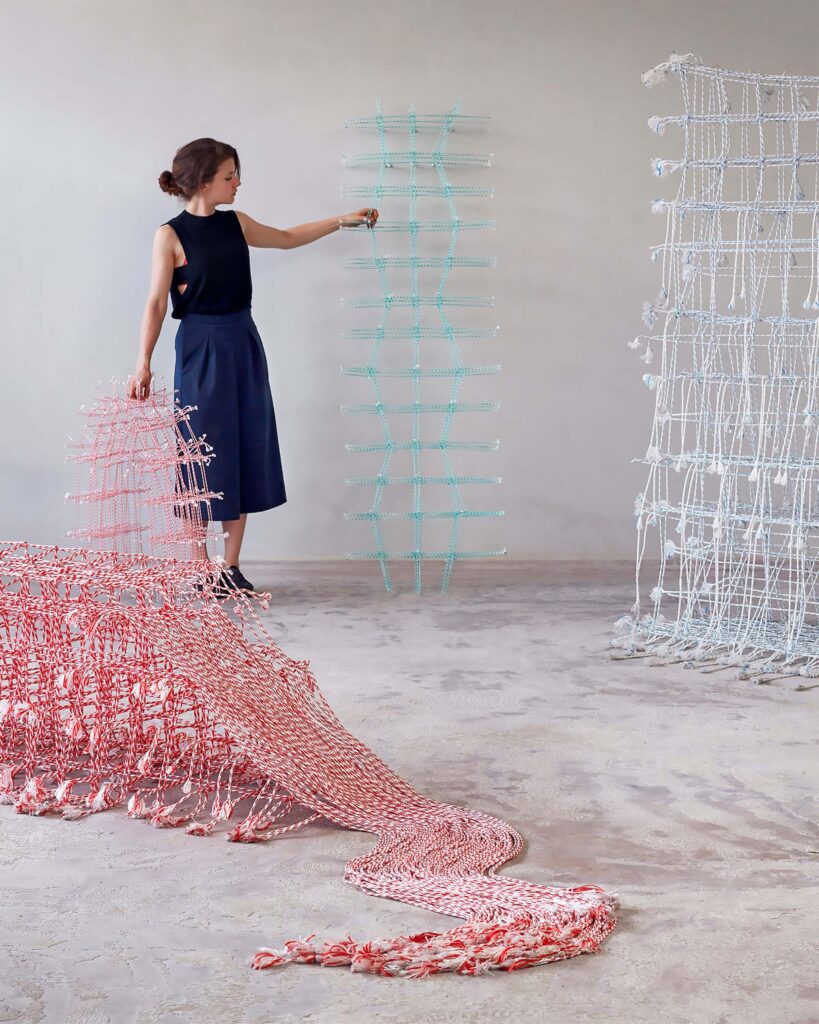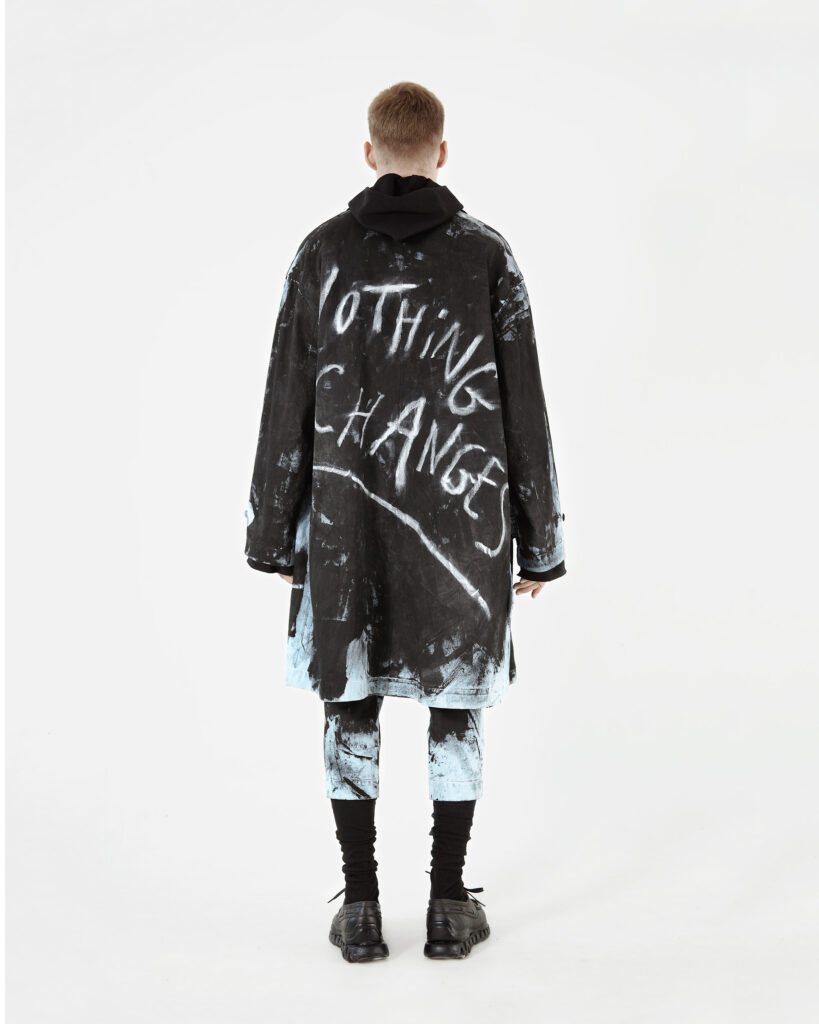Li Edelkoort’s vision for the future of fashion, design and social change.
Lidewij Edelkoort is a trend forecaster, curator, editor and educator who lives constantly in the future. She studies the connections between art, design, fashion and consumer culture, providing insightful analyses of lifestyle and design.
How did you become involved in the world of trends and fashion?
The trend is virtually everywhere on the planet, it is like an invisible area around our world. It is the common thinking of a critical mass of people able to grasp an idea and find it without necessarily looking for it. My most important tool is intuition. Intuition gives directions, the brain processes them to understand, to know which path to take, and then the heart begins to do an emotional process to discover the feelings that arise from those choices. Most of the time they are ideas that suddenly appear in my mind. And it’s also me wondering why those interesting words come to me. From that moment on, I study those words, those ideas and put together concepts. It’s a completely mental process, in fact, I never use photos, only at the conclusion of my work.


Standing Textile(s). Fransje Gimbrère proposes textile as a new and attractive construction material with infinite possibilities of application. “Standing Textile(s)” resulted in a technique that creates fragile-looking skeletons that give the sensation of solid volumes. Photo: Ronald Smits
What does it mean to be a humanitarian in the world of trends?
It means that my work has changed a lot over the years. I’ve seen how the idea of ready-to-wear was erected, how it gradually became important, then overpowering and finally a nuisance and a danger to the planet and to people. Now I have a very different way of addressing the public. For a long time I have been trying to motivate my clients to produce less and better, to get them interested and interested in biomaterials. But especially so that they create value and their products don’t become disposable. There is a lot more morality involved.
How do your customers receive this proposal?
A few years ago I wrote Anti_Fashion Manifesto, where I explain why the fashion system is slowing down, slowing down completely. When I wrote this it was like being a kamikaze, because all my clients could have left me, although it was not the case. On the contrary, they all thanked me because it was what they were thinking and could not say. From that moment on I think I have a different importance in this field. I am seen more as an advocate of a new world, a researcher of new forms. For example, every year I organize Anti_Fashion meetings in Marseille. I bring together people who are working on new initiatives on recycling, production, retail, among others. New ideas on how to share the work are discussed and it is very interesting to see how, year after year, these events become more important. For me it is an opportunity to meet new entrepreneurs who today are saying: “This fiber should be used for this”. It makes me happy because there is a long way to go, and it is clear that we can create a whole new way of working.
How do you link the trend to everyday life?
The trend is not just fashion, fashionism is only a small part of it. Precisely what makes me known is the fact that I see the great change of mentality in the world and in consumers, how we want to live, what we need, what the new economy consists of, what are the new ideals, the colors, the tastes, the frequencies, the elements, the essences… I am more of a kind of visionary. A few years ago I laid out a scenario for 2020 and when I look at it, I discover that everything is already happening, that it is incredibly accurate. These are changes that happen in the very long term. Most of the ideas I discover take ten to twenty years to take hold. But at the same time, for example, this summer I can say again everything I said two years ago, “You have to work on the sleeves, otherwise you’re not going to be able to sell this shirt because the predilection for sleeves is a detail that is making people happy.” So I also pay attention to details. There are other people who are able to focus on these details too, but not many people are able to see so far ahead.
In this context, what place do you assign to the world of carpets?
The carpet world has gone through a rather long and difficult period. Today all floors are stripped, we only see wood or stone floors. The same applies to textiles in the home: we hardly find upholstery anymore but simply plastic, wood and metal. All very hard materials. In 2011, when it seemed that textiles were going to disappear, I curated an exhibition in Milan called Talking Textiles together with Philip Fimmano. We showed the less common expressions of textiles in professional design and said, “We want to talk about textiles because it’s taking a wrong path.” We took that exhibition to several countries and did another one called Earth Matters, on the ecological and biological aspects of textiles, and in that way we kept the debate going. Fortunately, at that time there was a sea change and textiles are becoming popular again in the home. We are seeing a renaissance of curtains, even textiles on the walls; we see tweed upholstery, fabrics, textile designs. And we are also seeing the return of rugs. We needed warmth, comfort and sensory experiences because we live on screens all the time. Therefore, the more we live “on” screens, the more we need to embrace things.
Why do you refer to fashion as a system in crisis?
Because it is! In every aspect of the total chain no one else thinks about fashion, from education to the consumer, to retail, to advertising, to designers. What is made now is clothing, not fashion.
Is there anywhere in the world where you see a difference in this regard?
I think everyone is in T-shirts, jeans and sneakers. There is very little interest in clothing now, even from the public. While people want to wear the right T-shirt, jeans and shoes, that’s more of a product category and doesn’t really transform who you are. One country where women still dress up and men still have potential is Italy. Even there, all the women wear beautiful dresses, but with sneakers.


Left: Anti_fashion Manifesto. The fashion industry has reached its breaking point. Edelkoort courageously confronts marketing and advertising, while challenging education, materials, manufacturing, merchandising, designers, runway shows, press and consumers. It’s time to celebrate clothing! Clothing: Tigran Avetisyan Right: Stéphanie Baechler creates “wearable minerals”. From her gaze, minerals regain their solid state, adding durability, color and shine to garments. Photo: Stéphanie Baechler
What are the limits, if any, to your interests and concerns?
I am interested in everything that relates to our future, because it is not clear that we can save ourselves as a species. What we need is to try to figure out how we can survive. But we need a radical change. The climate factor is a big concern. We are witnessing more and more natural disasters. The price we have to pay for that damage is disproportionate and I don’t think we’re going to have enough money to take care of it. Also, there are imminent dangers from humans to humans themselves, which is nothing new. That would be the least of my concerns, although it is present. Then, there is the incredible threat of artificial intelligence and robotization that will take away livelihoods and jobs from most people. So, either we stop having children because what would be the point of existing if there is not much to achieve in this life, or there will be civil wars between extremists because people will be afraid due to lack of work. And, currently, we are already seeing this in America. In particular, we see how some countries can lose control of their economy from one day to the next.
Yes, we are very used to that….
We see very erratic movements. Unfortunately, we are not on a very good page in history. But human beings are smart and in the long run, I think we’re going to win. I think in 2050 or so, humanity will prevail. Right now, we are entering a better terrain to then become activists and fight for change. It’s not enough to sit and think, we need to become more engaged.
As a reference for future trends, what role do you see for design, especially in Latin America?
A few seasons ago I wrote a trend book about the emancipation of everything. There are many issues we need to address, not only the situation of women but all situations in the world of people, of changes, of demand, of fiber, of color… Even color must be emancipated! Let it be possible to say: “Poor beiges, they are so angry, they don’t always want to do the dirty work, let’s give them also a nice evening dress”, “Poor jean, it doesn’t always want to be a basic, it also wants to be frivolous”. That would be teaching the public to think differently. What I predicted in that book, which I couldn’t have known at the time, came true two years later with millions of women in the streets. That’s a trend. The last chapter of that book is about the emancipation of the southern hemisphere. There I propose that designers and companies take a leading role and become true partners in the whole global business. Then the southern hemisphere can perhaps bring all that to the northern hemisphere, which will then be wounded, threatened, worried, inactive. I think the southern hemisphere can bring happiness, color and a way to resist, to teach us how to cope with adversity. It is crucial to move forward, to abandon one’s limits and conquer the world.
